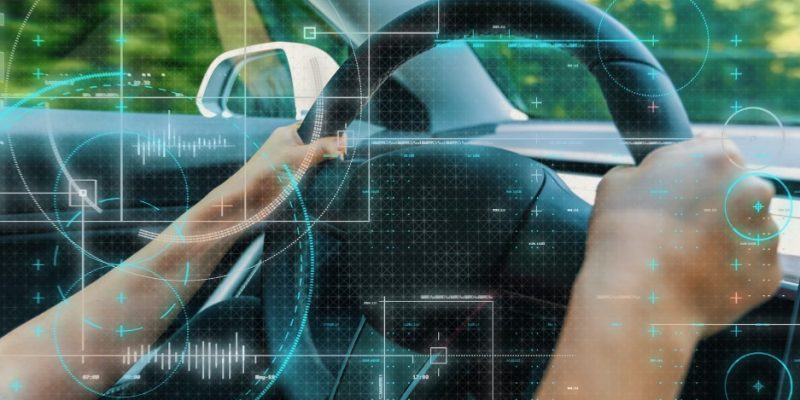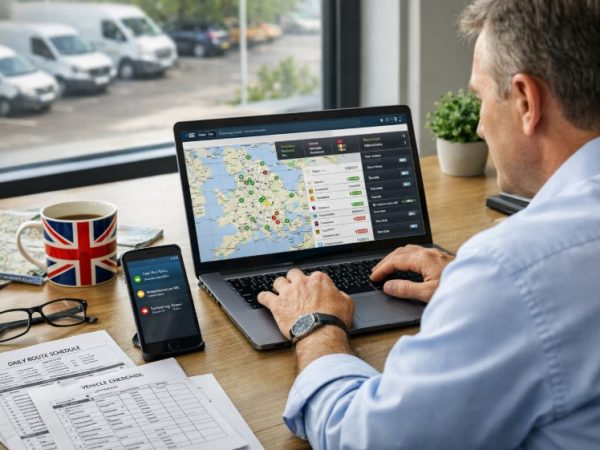
What Does Telematics Do? – All You Need to Know
What Does Telematics Do? – All You Need to Know
Telematics is a transformative technology that’s shaping the way we manage and monitor vehicles. By combining telecommunications and informatics, telematics provides a seamless way to track, diagnose, and improve vehicle performance. In today’s fast-paced world, understanding telematics is crucial for anyone involved in the automotive, logistics, or transportation industries.
What is Telematics?

Telematics is the integrated use of telecommunications and informatics to send information over great distances. This technology has a wide range of uses, from vehicle tracking to fleet management. The history of telematics dates back to the early 20th century, evolving significantly with advancements in GPS technology and data analytics.
How Does Telematics Work?
Telematics systems and devices work by collecting data through GPS technology and other sensors installed in a vehicle. This data is then transmitted to a central server using cellular networks. The collected data can include vehicle location, speed, fuel consumption, and diagnostic information. Users can access this information in real-time through a web portal or a mobile app, allowing for efficient monitoring and management.
Applications of Telematics
Vehicle Tracking
One of the primary uses of telematics is vehicle tracking. By providing real-time location data, telematics systems enable fleet managers to monitor the movement of vehicles, ensuring they are on the right route and schedule.
Fleet Management
Telematics plays a crucial role in fleet management. It helps in scheduling maintenance, monitoring driver behavior, and optimizing routes to save fuel and time. Fleet managers can use telematics data to improve operational efficiency and reduce costs.
Real-Time Tracking and Vehicle Diagnostics
![]()
Telematics systems provide real-time tracking of vehicle performance and diagnostics. This feature helps in identifying potential issues before they become serious problems, allowing for preventive maintenance and reducing downtime.
Usage-Based Insurance
Telematics data is used by insurance companies to offer usage-based insurance. By monitoring driving behavior, insurers can provide customized insurance plans based on how, when, and where a vehicle is driven, leading to potentially lower premiums for safe drivers.
Benefits of Telematics
- Improved Fuel Efficiency: Telematics data helps in identifying inefficient driving patterns and routes, leading to better fuel management and reduced consumption.
- Enhanced Vehicle Safety: By monitoring driver behavior and vehicle performance, telematics can help in preventing accidents and ensuring vehicles are in optimal condition.
- Better Fleet Management: With detailed insights into vehicle usage and performance, fleet managers can make informed decisions, reducing operational costs and improving efficiency.
- Reduced Operational Costs: Telematics systems streamline various processes like route planning, maintenance scheduling, and fuel management, leading to significant cost savings.
Telematics in Different Industries
Automotive Industry

In the automotive industry, telematics is used for vehicle tracking, remote diagnostics, and improving customer service through connected car technologies.
Insurance Industry
Insurance companies leverage telematics for usage-based insurance, providing personalized premiums based on driving behavior.
Logistics and Transportation
Telematics is essential in logistics and transportation for efficient fleet management, route optimization, and ensuring timely deliveries.
Public Sector
In the public sector, telematics is used for managing public transport systems, emergency services, and other government-owned fleets.
Challenges and Considerations
- Privacy Concerns: The collection and use of telematics data raise privacy issues. It’s crucial to ensure that data is used ethically and in compliance with regulations.
- Data Security: Protecting telematics data from cyber threats is essential to prevent unauthorized access and misuse.
- Initial Setup Costs: Implementing telematics systems can involve significant upfront costs. However, the long-term benefits often outweigh these initial investments.
Future of Telematics
The future of telematics is promising with emerging developments such as autonomous vehicles, enhanced data analytics, and the incorporation of artificial intelligence.
These advancements will further enhance the capabilities of telematics systems, making them more efficient and user-friendly. Over the next decade, we can expect telematics to play an even more integral role in various industries, driving innovation and efficiency with brands like radius.com.
Conclusion
Telematics is a powerful technology that offers numerous benefits across different sectors. From improving fuel efficiency to enhancing vehicle safety, telematics systems provide valuable insights that help in better decision-making and cost savings. As we move towards a more connected and data-driven world, understanding and leveraging telematics will be crucial for staying competitive and achieving operational excellence.





